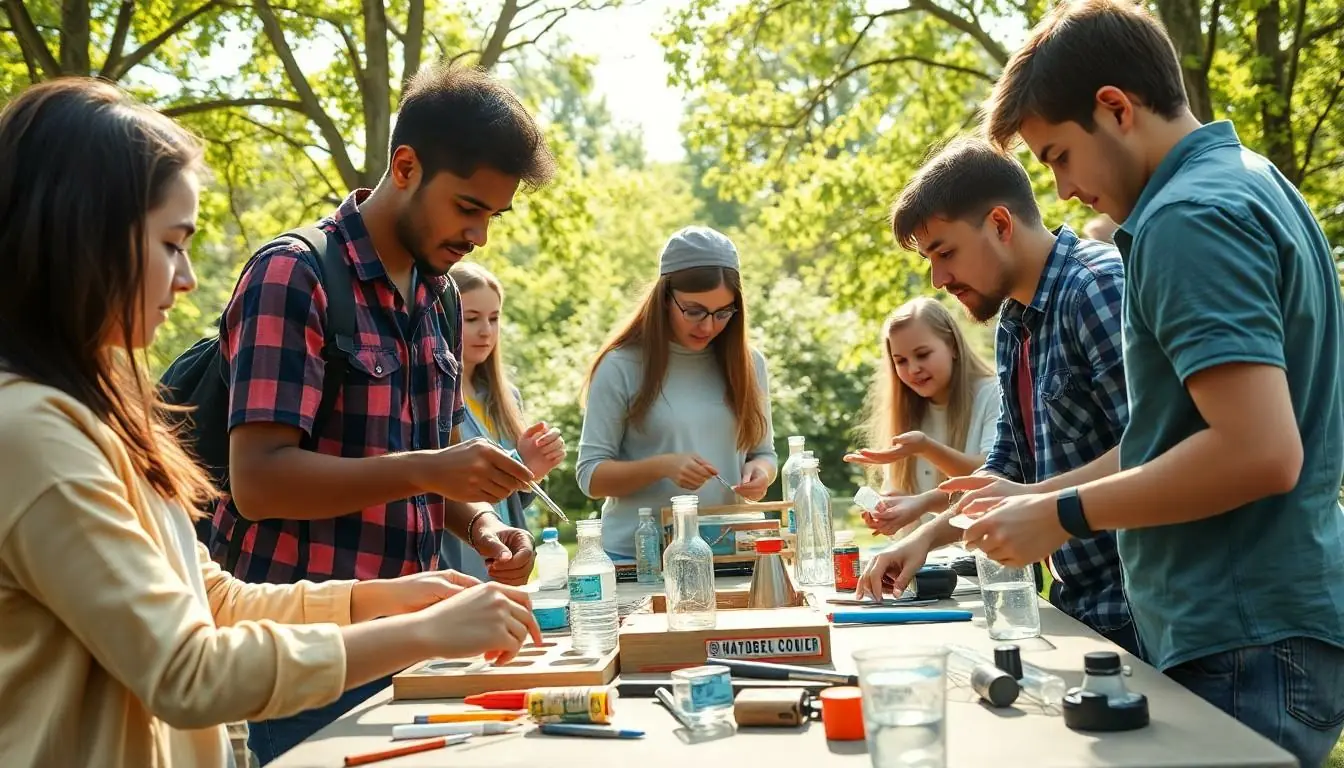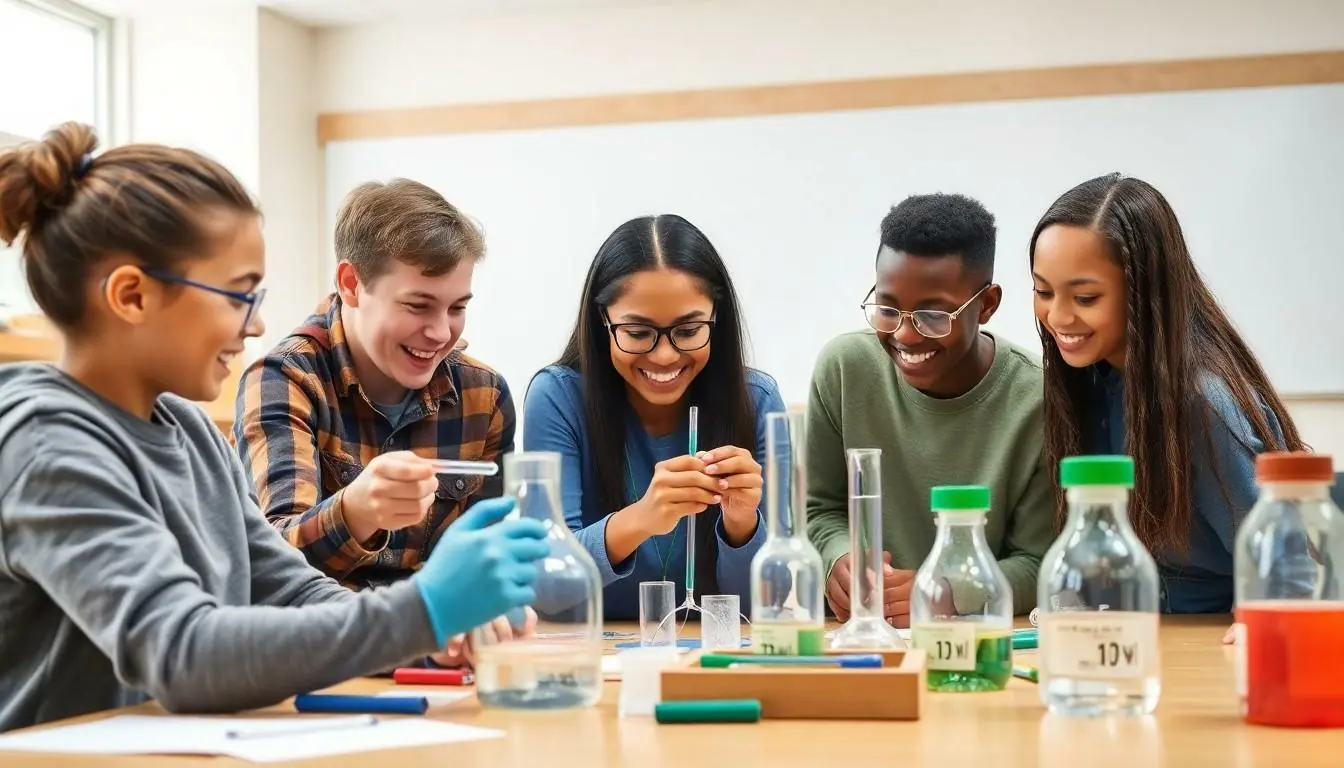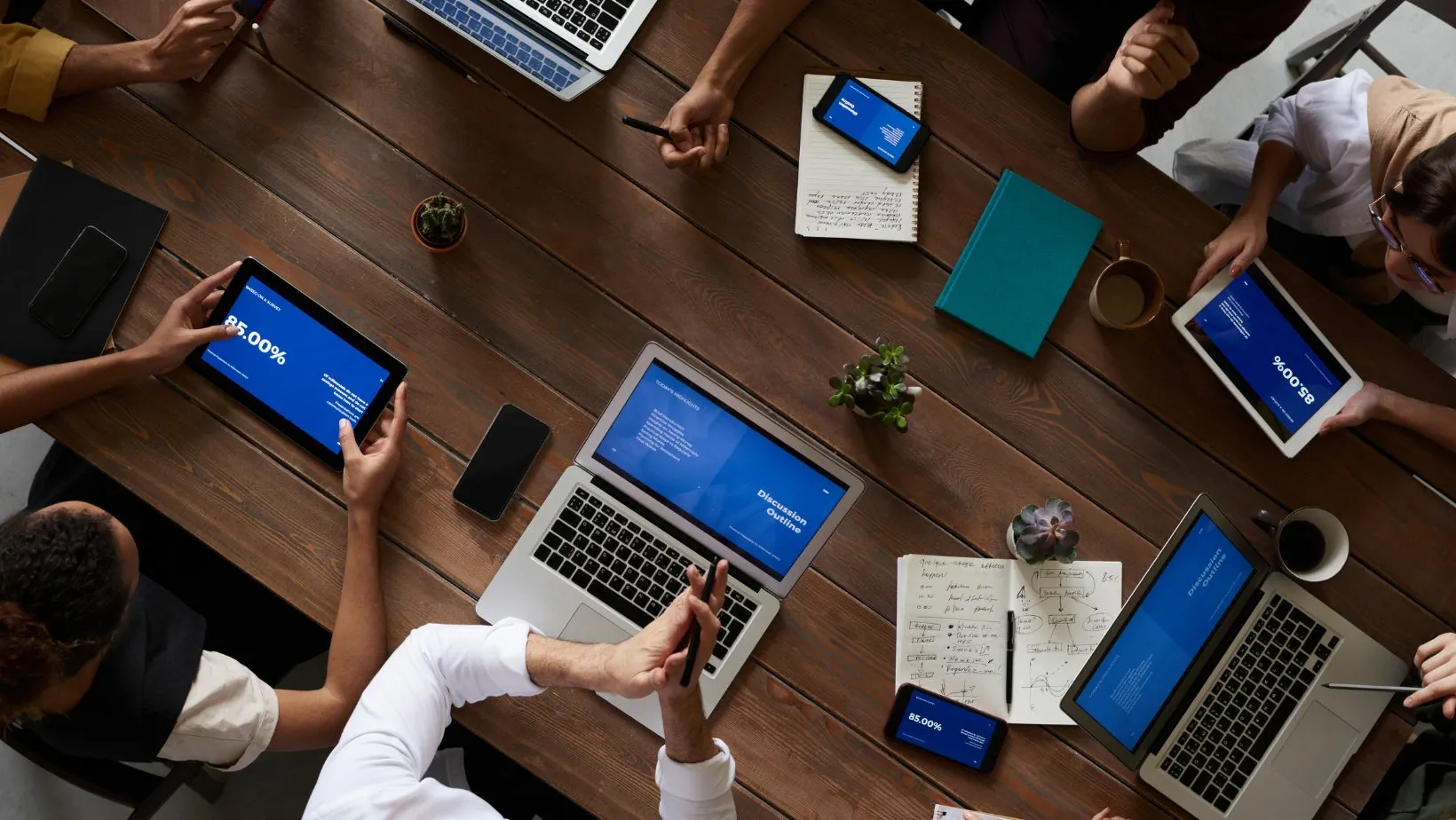In today’s fast-paced world, classroom learning can sometimes feel like a one-way street. But what if there were fun detours along the way? Engaging activities, innovative programs, and hands-on learning experiences can transform the mundane into the extraordinary, sparking curiosity and creativity in students. Imagine a classroom where students aren’t just absorbing information but actively participating in their education like it’s the latest viral dance challenge.
Table of Contents
ToggleImportance of Complementary Activities
Complementary activities play a crucial role in enriching classroom learning. Engaging in dynamic experiences fosters deeper understanding and retention of knowledge.
Enhancing Understanding Through Engagement
Active participation in learning experiences leads to increased student engagement. Students grasp concepts more effectively when they interact with the material. Programs like hands-on workshops and interactive simulations encourage critical thinking and problem-solving skills. For instance, science experiments in a lab allow students to apply theoretical knowledge to real-world situations. Engaged learners often show improved motivation and better grades, reinforcing the value of these activities.
Bridging Theory and Practice
Complementary activities connect theoretical knowledge with practical applications. When students engage in field trips, internships, or group projects, they experience real-world relevance. These experiences help students see how theories function outside classroom walls. For example, art programs can deepen understanding of historical contexts. Bridging gaps between theory and practice cultivates a more comprehensive educational experience, equipping students for future challenges.
Types of Complementary Activities
Complementary activities enhance classroom learning by making education dynamic and interactive. Various formats exist to engage students beyond traditional lessons.
Extracurricular Programs
Extracurricular programs provide valuable experiences that develop skills outside the classroom. Clubs, sports teams, and music groups foster teamwork and leadership. Participation in these activities often helps students build friendships and establish a sense of community. Additionally, academic clubs focused on subjects like science or debate encourage deeper exploration of content. These programs often strengthen college applications, showcasing students’ diverse interests and commitment.
Hands-On Learning Experiences
Hands-on learning experiences allow students to apply their knowledge practically. Workshops, labs, and interactive projects invite students to explore concepts actively. Engaging in experiments encourages critical thinking while reinforcing theoretical knowledge. For instance, science fairs enable students to design and present their projects, enhancing communication skills. Field trips complement classroom lessons by providing real-world applications, further enriching the learning process.
Community Involvement
Community involvement connects classroom learning to real-world issues. Volunteering or internships expose students to various career paths and social challenges. Local organizations often welcome student participation, allowing them to contribute positively to their communities. Moreover, service-learning projects enhance empathy and civic responsibility. Events like clean-up drives or fundraising initiatives teach teamwork and organization skills while increasing awareness of community needs.
Effective Implementation Strategies
Effective strategies enhance the impact of complementary activities, programs, and learning experiences in education. By prioritizing collaboration and integration, educators can significantly enrich the learning environment.
Collaborating with Educators
Collaboration among educators fosters a cohesive approach to integrating complementary activities. Team teaching can enhance learning experiences, allowing teachers to combine their strengths. Utilizing expertise from various disciplines benefits students, creating interdisciplinary projects that encourage broader perspectives. Regular communication among staff ensures alignment between classroom lessons and supplemental activities. Sharing feedback on student progress among educators can refine strategies and improve outcomes. Establishing partnerships with local organizations also expands resources and opportunities for experiential learning. Such collaborations ultimately provide students with diverse learning opportunities that resonate with their interests.
Integrating Technology
Technology integration streamlines the implementation of complementary activities within the learning process. Utilizing digital tools enables students to engage with content interactively, driving motivation and participation. Online platforms can facilitate virtual field trips, expanding learning beyond classroom walls. Adopting educational apps encourages collaboration, offering students opportunities to work together on projects remotely. Incorporating multimedia presentations enhances information retention, making learning more dynamic. Data analytics software can provide insights into student engagement, guiding educators on areas for improvement. Effectively leveraging technology harnesses its potential to deepen understanding and connections to real-world applications.
Measuring Impact on Learning
Complementary activities significantly enhance learning experiences and provide crucial insights into their effectiveness. Effective measurement translates to informed decisions that optimize future educational strategies.
Assessing Student Engagement
Observation of student engagement often reveals the impact of complementary activities on learners’ focus and participation. Surveys can gauge interest levels and motivations, while participation rates in extracurriculars also highlight outreach success. Tracking active involvement in workshops or community projects helps educators understand which activities resonate most with students. Analyzing feedback enables real-time adjustments, ensuring programs align with students’ needs and learning preferences. Engaged students typically exhibit higher enthusiasm toward schoolwork, translating to a more dynamic classroom environment. Observing interactions during these experiences allows educators to identify what promotes excitement and curiosity in learners, identifying which methods cultivate a vibrant learning atmosphere.
Evaluating Academic Performance
Data analysis plays a critical role in evaluating the effectiveness of complementary activities on academic performance. Standardized test scores often serve as baseline indicators, while continuous assessments can provide real-time insights into student progress. Comparisons between students engaged in additional programs and those solely involved in traditional learning can highlight performance differentials. Grades in subjects linked to hands-on activities may improve, showcasing the importance of practical experiences. Monitoring overall academic trends helps in recognizing the correlation between enhanced learning opportunities and educational outcomes. Documenting achievements through projects or presentations provides concrete evidence of student learning, illustrating their deeper understanding of concepts and skills.
Conclusion
Embracing complementary activities is essential for creating a vibrant educational landscape. These experiences not only enhance student engagement but also bridge the gap between theoretical knowledge and practical application. By actively participating in diverse programs and hands-on learning, students develop critical skills that prepare them for future challenges.
The integration of innovative strategies and collaboration among educators further amplifies the benefits of these activities. As schools continue to adapt and evolve, the focus on enriching learning experiences will undoubtedly lead to improved academic outcomes and a more motivated student body. Investing in these complementary opportunities is key to nurturing well-rounded individuals ready to thrive in an ever-changing world.




